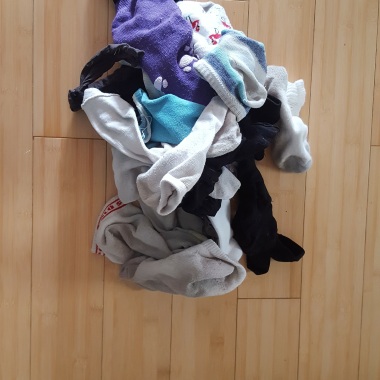I’m ashamed of the excess I’ve accumulated. It weighs me down literally and figuratively and leaves me anchored to stuff. Mostly it manifests itself in overstuffed closets and drawers – clothing. (Ok, overflowing bookshelves too. I like the smell of books, the tactile pleasure of turning paper pages.) I know, get over it.
If I am to fulfill my quest of living an adventurous, freestyle life, I must pare my belongings down to the bare essentials. Not necessarily Spartan, but definitely more simplified and streamlined than present.
Like many, I make my monthly trips to Goodwill, addressing the most egregious overflow of this American, consumptive life. But I decided I needed a more focused approach and have been going through each drawer and closet in my home methodically and ruthlessly. And it feels so good. (Certainly better and more lasting than the short-lived thrill of too many impulse buys.)
Let’s face it, we don’t need to read a book on minimalism, play some 33 wardrobe game, or hire an organizer, unless we want to get rid of some cash too. We all know how to go through our junk and get rid of it. It’s easy to determine what we use and what we don’t. The hard part is just doing it. Sure, it can seem overwhelming at first, especially if it’s been a while since your last purge. Just start with 1 drawer at time – something relatively non-intimidating like your sock drawer. My sock drawer was stuffed with dozens of single, useless, sad socks. Many were in such bad shape, I couldn’t recruit them for any of the “62 things you can do with your old mismatched socks”
Textile excess is more than a personal problem. It’s a planetary one. If you need more motivation to go through your closet and stop impulse buying clothes and shoes, it’s here:
- Americans recycle or donate only 15 percent of their used clothing
- The rest of it 1 0.5 million tons goes into landfills every year.
- Americans buy five times as much clothing as they did in 1980
- Decomposing clothing releases the harmful greenhouse gas, methane, a significant contributor to global warming.
- The chemicals and dyes leach into the soil, contaminating both surface and groundwater.
- Recycles clothes are used as second hand clothes (45%) and re-purposed for industrial rags (30%) and otherwise ground up and re-purposed.
Sources: Atlantic Magazine, Triple Pundit
How do we move from a 15 percent textile recycling rate of clothes and shoes to 100 percent? How can we motivate others to recycle their clothes and shoes, instead of trashing them?
For my part, I will take my clothes pile to Goodwill, not buy any textiles in 2017, and be very deliberate and conscious of any purchases I make of any kind.
Will you join me and pledge to recycle your clothing and shoes? Or is there another excess that you’d like to trim in your life?
Let’s pare down together and pass it on. It will be good for us, our budgets, and our planet.

